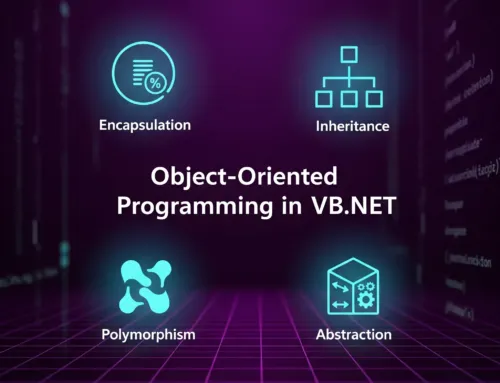
Approx. read time: 4.1 min.
Post: Mastering Python for Advanced Data Analysis: Unlocking Predictive Insights and Strategic What-If Scenarios
Mastering Python for Advanced Data Analysis: Unlocking Predictive Insights and Strategic What-If Scenarios
Advanced Python Lesson: Data Analysis and What-If Scenarios
Advanced Data Manipulation with Pandas
Pandas offers sophisticated capabilities for data cleaning, transformation, and analysis. Key features include:
- Advanced Merging and Joining: Complex data merging scenarios with different join operations.
- Window Functions: Calculations over a sliding window for time-series data.
- Categorical Data: Support for categorical data to optimize memory usage and performance.
Complex Numerical Operations with NumPy
NumPy supports large, multi-dimensional arrays and matrices. Advanced features include:
- Universal Functions (ufunc): Element-by-element operations on ndarrays.
- Linear Algebra Operations: Support for comprehensive linear algebra operations.
Predictive Analytics and Machine Learning with Scikit-learn
Scikit-learn enables predictive analytics with features like:
- Ensemble Methods: Improve prediction accuracy through techniques like Random Forests.
- Feature Selection: Techniques to select the most informative features for models.
Advanced Visualization with Matplotlib and Seaborn
Matplotlib and Seaborn provide tools for advanced data visualization, including:
- Customization: Extensive options for creating publication-quality figures.
- Complex Chart Types: Support for complex charts like violin plots and heatmaps.
Mastering Python for Advanced Data Analysis: Unlocking Predictive Insights and Strategic What-If Scenarios
Comprehensive Example: Predictive “What-If” Analysis
This example demonstrates a business scenario analyzing the impact of marketing spend on sales.
Step 1: Data Preparation
import pandas as pd
# Load dataset
data = pd.read_csv('sales_data.csv')
# Preprocess data
data['month'] = pd.to_datetime(data['month'])
data.set_index('month', inplace=True)
data.fillna(method='ffill', inplace=True)
Step 2: Exploratory Data Analysis (EDA)
import seaborn as sns
import matplotlib.pyplot as plt
# Plot and analyze data
sns.scatterplot(data=data, x='marketing_spend', y='sales')
plt.title('Marketing Spend vs. Sales')
plt.show()
print(data[['marketing_spend', 'sales']].corr())
Step 3: Predictive Modeling
from sklearn.model_selection import train_test_split
from sklearn.linear_model import LinearRegression
# Prepare and split data
X = data[['marketing_spend']]
y = data['sales']
X_train, X_test, y_train, y_test = train_test_split(X, y, test_size=0.2)
# Train model
model = LinearRegression()
model.fit(X_train, y_train)
# Predict and evaluate
predictions = model.predict(X_test)
Step 4: “What-If” Analysis
import numpy as np
# Define scenarios
scenarios = np.linspace(data['marketing_spend'].min(), data['marketing_spend'].max(), 5)
predicted_sales = model.predict(scenarios.reshape(-1, 1))
# Visualize scenarios
plt.plot(scenarios, predicted_sales, marker='o', linestyle='--')
plt.title('Predicted Sales under Different Marketing Spend Scenarios')
plt.xlabel('Marketing Spend')
plt.ylabel('Predicted Sales')
plt.grid(True)
plt.show()
What-If Analysis in Python: Detailed Code Examples
Example 1: Data Preparation with Pandas
Pandas is essential for data manipulation and analysis. Here's how to prepare your data:
import pandas as pd
# Load data from a CSV file
data = pd.read_csv('your_data.csv')
# Convert date columns to datetime objects
data['date_column'] = pd.to_datetime(data['date_column'])
# Fill missing values, if any
data.fillna(method='ffill', inplace=True) # Forward fill method
# Create new columns for more insights
data['new_metric'] = data['sales'] / data['visitors']
# Documentation: Loads data, handles missing values, and creates a new metric.
Example 2: Predictive Modeling with Scikit-learn
Building a model with Scikit-learn to predict future outcomes:
from sklearn.model_selection import train_test_split
from sklearn.linear_model import LinearRegression
from sklearn.metrics import mean_squared_error
# Features and target variable
X = data[['feature1', 'feature2']]
y = data['target']
# Splitting data
X_train, X_test, y_train, y_test = train_test_split(X, y, test_size=0.2, random_state=42)
# Train a linear regression model
model = LinearRegression()
model.fit(X_train, y_train)
# Predict and evaluate
predictions = model.predict(X_test)
print(f"Mean Squared Error: ")
# Documentation: Splits data, trains a model, and evaluates performance.
Example 3: Scenario Analysis with Data Visualization
Visualizing different scenarios with Matplotlib:
import matplotlib.pyplot as plt
import numpy as np
# Simulate scenarios
scenario_data = np.linspace(start=10, stop=100, num=10)
predictions = model.predict(scenario_data.reshape(-1, 1))
# Plotting
plt.figure(figsize=(10, 6))
plt.plot(scenario_data, predictions, marker='o', linestyle='-', color='blue')
plt.title('Predicted Outcome for Different Scenarios')
plt.xlabel('Scenario Feature')
plt.ylabel('Predicted Outcome')
plt.grid(True)
plt.show()
# Documentation: Visualizes outcomes of scenarios based on the model.
Related Posts:
Mastering Gephi Network Visualization(Opens in a new browser tab)
Learn Modules and Packages in Python programming(Opens in a new browser tab)
Mastering the Interview: Strategies for Success in the Job Market(Opens in a new browser tab)
What is negative Infinity in JavaScript?(Opens in a new browser tab)








